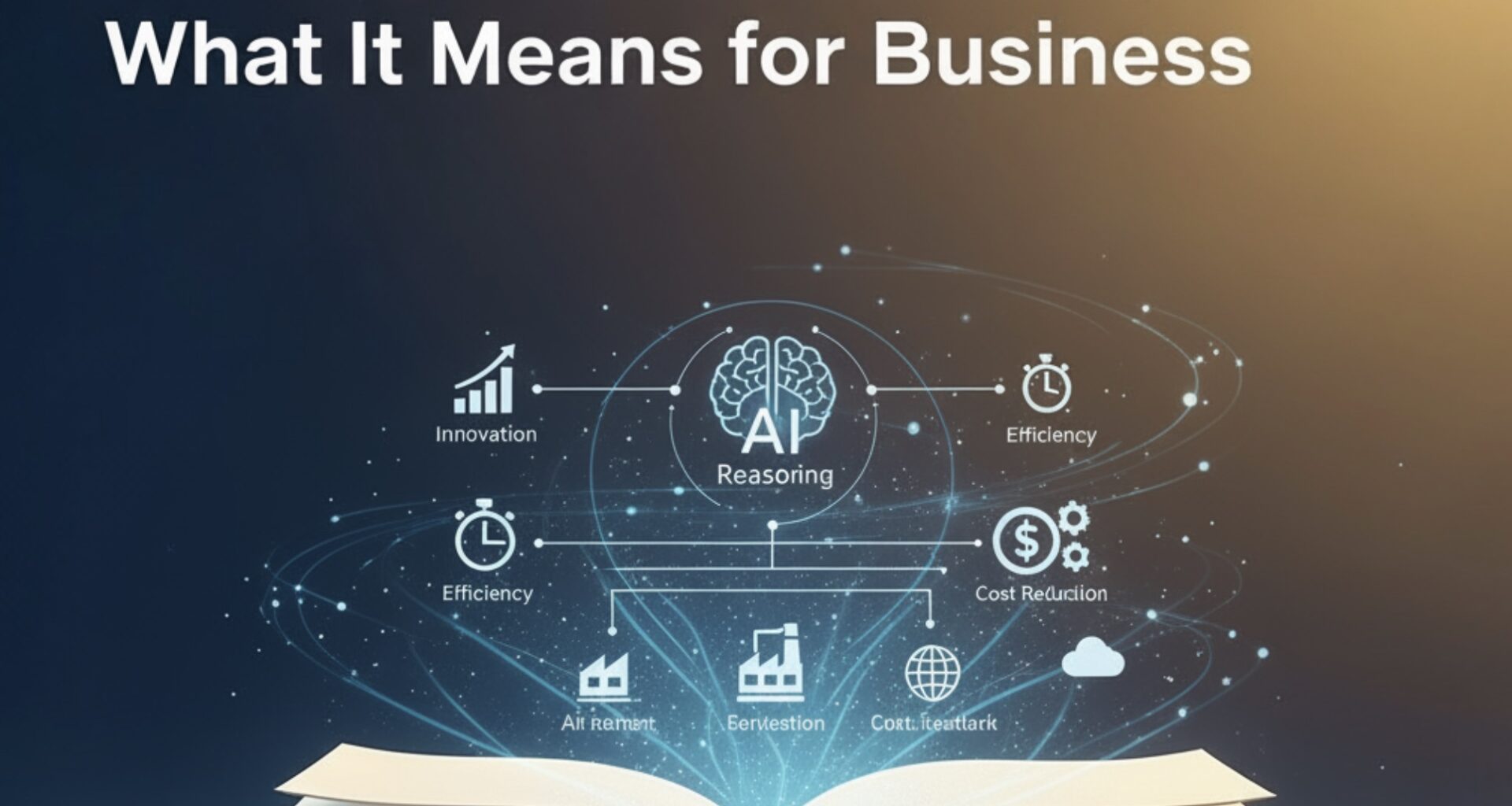Executive summary.
Zoom’s decision to (1) bundle AI Companion 3.0 core features at no additional cost for paid Zoom Workplace plans starting November 2025, and (2) sell a Custom AI Companion add‑on for $12 per user/month that lets administrators build and deploy low‑code, template‑driven agents, resets the economics of AI in collaboration suites. For buyers, it lowers the floor price of baseline AI and creates a surgical, department‑by‑department path to automation. For Zoom, it supports seat retention, add‑on monetization, and validates the firm’s AI‑first narrative amid the company’s fastest revenue growth in 11 quarters last quarter. Zoom+2Zoom+2
What’s new (the facts)
- Price & timing. AI Companion 3.0 core capabilities are expected to be generally available in November 2025 at no extra charge for paid Zoom Workplace accounts. The Custom AI Companion add‑on is $12 per user per month. Zoom
- What “Custom” buys you. A low‑code agent builder with pre‑built templates and a tooling library to configure knowledge bases and actions, plus options to connect third‑party agents; designed for IT admins to create and deploy tailored AI solutions at scale. Zoom
- Where it works. New note‑taking and summarization features extend beyond Zoom to in‑person meetings and, beginning fall 2025, meetings on Microsoft Teams and Google Meet (Webex to follow). That matters in mixed‑stack environments. Zoom
- Ecosystem signals. Zoom is expanding integrations (e.g., ServiceNow, Jira, Asana, Box/Drive, and more) through Custom AI Companion to let agents trigger tasks across your app stack. Nasdaq
- Market context. Zoom’s most recent quarter (reported Aug. 21–22, 2025) delivered a 4.7% YoY revenue increase—its strongest in 11 quarters—and the company lifted full‑year guidance; management and coverage framed AI as the growth engine. Yahoo Finance+1
The business impact
1) The economics: a new floor price for baseline AI
By including core AI at no extra charge, Zoom aligns with a broader industry shift (e.g., Google now includes premium Gemini AI across Business and Enterprise Workspace plans) and puts pressure on per‑seat AI pricing elsewhere. In contrast, Microsoft 365 Copilot remains $30/user/month for businesses—useful context when you compare “AI seats” across your portfolio. Google Help+1
What this means for buyers:
- Your baseline AI (summaries, action items, retrieval across Zoom assets) effectively becomes “free” if you already pay for Zoom Workplace. That can yield material value without a new budget line. Zoom
- The $12 Custom add‑on becomes a targeted spend for groups that benefit from custom workflows (IT help desk triage, CX ticket resolution, sales follow‑ups, project updates) or need to plug into systems of record (e.g., ServiceNow, Jira, Drive/Box). Nasdaq
2) Process transformation: from transcripts to completed tasks
Zoom’s positioning of agentic AI—“drive conversations to completion”—shifts AI from documentation to execution: scheduling meetings, prepping agendas, nudging decisions in‑meeting, and pulling context from Zoom and (when enabled) Google/Microsoft platforms. The immediate impact is fewer manual steps between discussion and delivery. Zoom
Department‑level examples (near‑term):
- Customer Support / IT: AI agents look up knowledge, summarize cases, and open/route tickets in connected tools—cutting time‑to‑resolution. Nasdaq
- Sales / RevOps: Auto‑generate follow‑ups, update opportunity notes, schedule next steps, and surface relevant assets before calls. Zoom
- Project teams: Cross‑meeting retrieval (“what did we decide last week?”) plus automatic task creation across Asana/Jira. Nasdaq
3) IT, risk, and governance: low‑code power, high‑stakes guardrails
The low‑code agent builder pushes AI creation closer to the business, but this increases the need for governance: prompt controls, data‑source scoping, approval workflows, and auditability. Zoom’s AI Companion is bundled with paid plans (availability may vary by region/vertical), and specialized/custom agents or certain third‑party agents may carry additional fees—procurement and security teams should review entitlements and data‑handling policies before roll‑out. Zoom
Practical guardrails to adopt on day one:
- Apply least‑privilege access to connected knowledge bases; record and periodically review agent actions.
- Maintain template libraries (e.g., meeting‑summary or escalation templates) at the admin level to standardize outcomes. Zoom
- Establish human‑in‑the‑loop checkpoints for high‑impact actions (customer credits, policy changes).
4) Competitive dynamics: pricing and packaging pressure
Zoom’s approach—bundle core AI, monetize custom automation—splits the difference between vendors who charge broadly for AI and those who bake it into suites. Consider how this lands relative to your stack:
- Microsoft 365 Copilot: powerful in Office/Teams but $30/user/month on top of existing licenses. Microsoft
- Google Workspace with Gemini: premium AI included in Business and Enterprise plans since Jan. 2025. Google Help
- Cisco Webex: AI Assistant included in paid Webex Suite plans, per Cisco pricing pages. Webex
Net effect: if your meeting platform is Zoom, the marginal cost to get useful AI goes to zero for core needs and $12/user/month for custom agents—often undercutting “horizontal” AI seat prices elsewhere. Zoom
5) Impact on Zoom’s business (why it matters to you)
Zoom’s accelerated revenue growth (best in 11 quarters) and raised guidance signal investor belief that AI‑led bundling and add‑ons can expand ARPU while defending seats against suite‑based competitors. That improves Zoom’s capacity to invest in the roadmap you’ll depend on—especially the agent builder and cross‑platform support. Yahoo Finance+1
Cost & ROI: quick, conservative math you can adapt
Scenario A — Baseline “free” AI with Zoom Workplace.
Assume 1,000 knowledge workers, 10 minutes/day saved by summaries, action items, and retrieval; 230 workdays/year; fully‑loaded labor $50/hour:
- Time saved per user: 38.3 hours/year
- Value per user: $1,916.67/year
- Aggregate value: $1.92M/year (no new software cost if you already have Zoom Workplace).
This is illustrative; change minutes/day, days/year, and labor rates to your context.
Scenario B — Selective Custom AI Companion seats.
Assume 200 seats on the $12 add‑on (=$144/year each), +15 minutes/day incremental savings from custom agents (ticket triage, CRM/ITSM updates, tailored workflows):
- Time saved per user: 57.5 hours/year
- Value per user: $2,875/year
- Add‑on cost: $28,800/year
- Estimated net benefit: ~$546,200/year (~19× ROI)
Break‑even check: At $144/year, you break even at ~0.75 minutes saved per user per day at $50/hour—i.e., tiny per‑day gains justify the add‑on when aimed at the right roles.
“Core vs. Custom” at a glance
| Dimension | Core AI Companion (included) | Custom AI Companion ($12/user/mo) |
|---|---|---|
| Availability & price | Included with paid Zoom Workplace; GA Nov 2025 | Paid add‑on |
| Primary value | Meeting notes, summaries, task extraction, retrieval; cross‑platform note‑taking (Teams/Meet) and in‑person coverage | Build low‑code agents with pre‑built templates; connect data sources/apps; deploy to specific groups |
| Best for | Organization‑wide baseline productivity | Targeted teams (Support, IT, Sales, Ops) needing workflow automation |
| Integration scope | Zoom apps & enabled platforms | Adds orchestration across third‑party apps (e.g., ServiceNow, Jira, Asana, Box/Drive) |
| Governance | Standard admin controls | Requires agent lifecycle mgmt, approvals, and monitoring |
How to adopt (a 30–60–90 day plan)
Days 0–30: Baseline enablement
- Turn on AI Companion for paid seats; publish an internal AI use policy and “what’s captured/shared” guidance.
- Pilot core features in 2–3 teams (Support, Sales, PM). Track minutes saved, follow‑ups auto‑sent, and tickets resolved/day. Zoom
Days 31–60: Custom agents for one or two workflows
- Use the agent builder to prototype one high‑volume workflow (e.g., password resets, RMA triage). Add connectors only as needed; log agent actions.
- Set human‑in‑the‑loop gates for any externally visible action (customer credits, emails). Zoom
Days 61–90: Scale & govern
- Expand Custom AI seats only where the KPI lift is clear; publish reusable templates; schedule monthly reviews.
- Integrate with ServiceNow/Jira/Asana as justified by metrics; keep permissions scoped to least privilege. Nasdaq
Risks & mitigations
- Over‑automation and errors. Start with low‑risk tasks; require approvals for irreversible actions.
- Data sprawl & leakage. Centralize data‑source configuration; audit access and redact sensitive fields where possible. Zoom
- Change fatigue. Provide micro‑training (prompts, do/don’t) and bake AI summaries into existing collaboration rhythms (e.g., posting to Team Chat). Zoom
Bottom line
Zoom’s pricing and packaging make baseline meeting AI table stakes for any org already on Zoom Workplace, while the $12 Custom AI Companion creates a pragmatic automation lane for the teams that can quantify ROI fast. Combined with credible revenue momentum and a cross‑platform footprint, the business case is straightforward: enable core AI broadly; fund Custom AI where a single workflow shows clear time‑to‑value. Zoom+1








